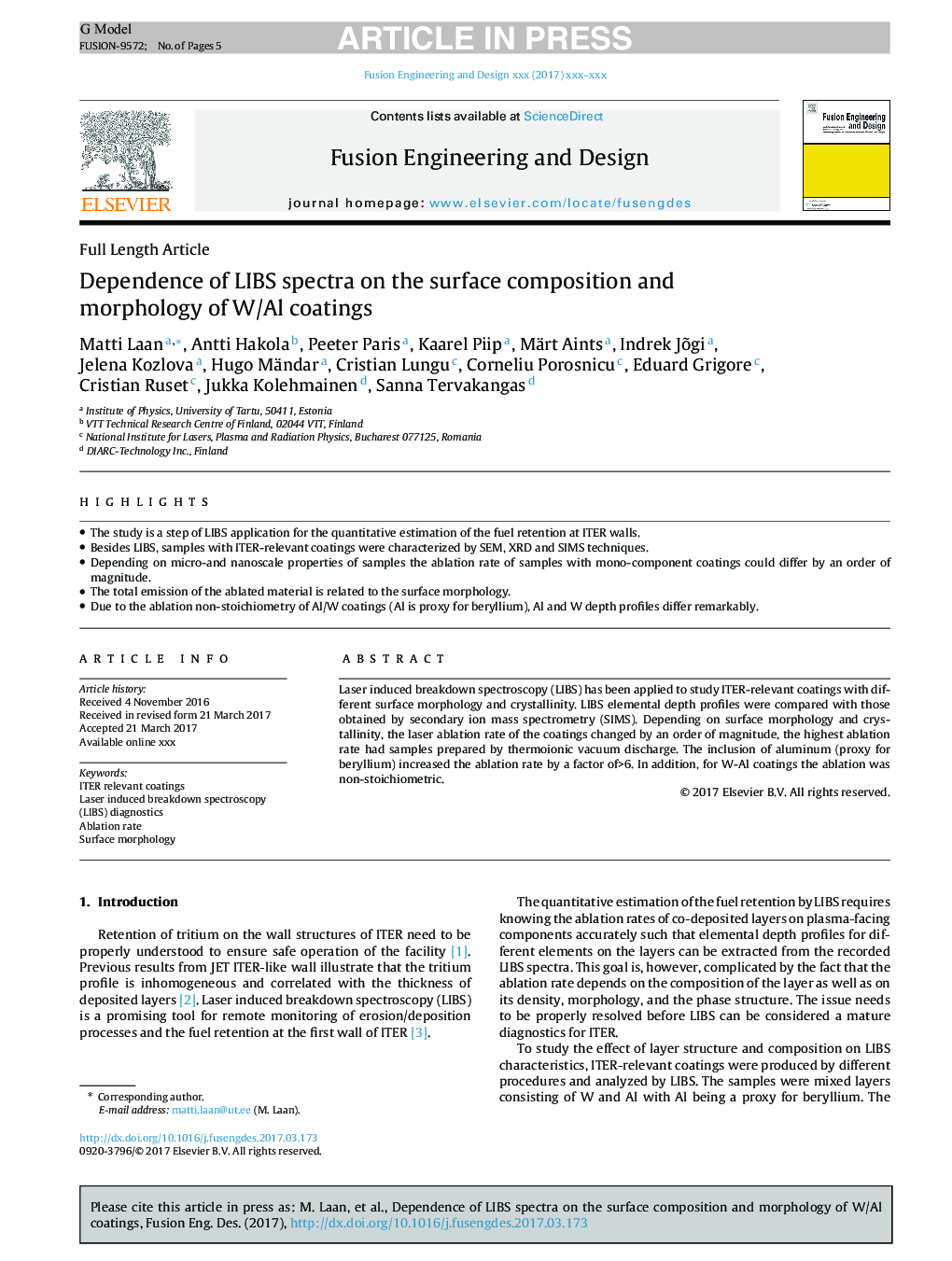| Article ID | Journal | Published Year | Pages | File Type |
|---|---|---|---|---|
| 4921073 | Fusion Engineering and Design | 2017 | 5 Pages |
Abstract
Laser induced breakdown spectroscopy (LIBS) has been applied to study ITER-relevant coatings with different surface morphology and crystallinity. LIBS elemental depth profiles were compared with those obtained by secondary ion mass spectrometry (SIMS). Depending on surface morphology and crystallinity, the laser ablation rate of the coatings changed by an order of magnitude, the highest ablation rate had samples prepared by thermoionic vacuum discharge. The inclusion of aluminum (proxy for beryllium) increased the ablation rate by a factor of>6. In addition, for W-Al coatings the ablation was non-stoichiometric.
Keywords
Related Topics
Physical Sciences and Engineering
Energy
Energy Engineering and Power Technology
Authors
Matti Laan, Antti Hakola, Peeter Paris, Kaarel Piip, Märt Aints, Indrek Jõgi, Jelena Kozlova, Hugo Mändar, Cristian Lungu, Corneliu Porosnicu, Eduard Grigore, Cristian Ruset, Jukka Kolehmainen, Sanna Tervakangas,
